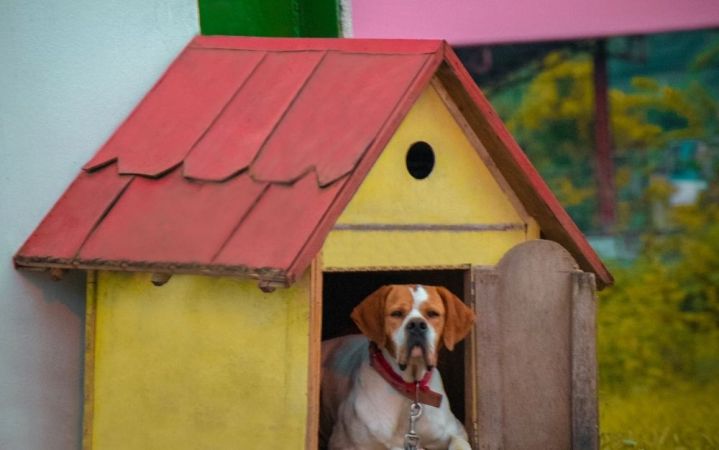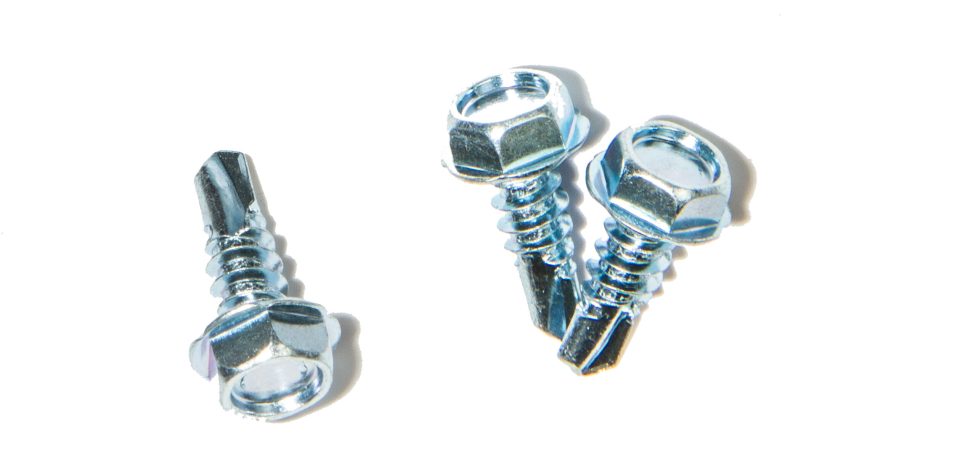We may earn revenue from the products available on this page and participate in affiliate programs. Learn More ›
Experts say there are around 709 million domesticated rabbits living in households and homesteads around the world. Rabbits are the third most popular pet in the United States, and many more rabbits serve as important livestock. These rabbits may be raised as meat or fur animals or earn their keep by providing valuable droppings. It may seem strange, but rabbit manure is considered an ideal cold fertilizer for gardening and farming—and can even be purchased in small batches on Etsy! Whether they are pampered pets or treasured livestock, providing the best rabbit run and hutch possible is the first step to raising happy, healthy rabbits.
- Best Large Rabbit Run: Paw Hut Galvanized Run
- Best Covered Rabbit Run: Covered Rabbit Run
- Best Rabbit Run and Hutch Combo: Paw Hut Hutch with Run
- Best Wooden Enclosure: Wooden Rabbit Run
- Best Budget Rabbit Run: Iris Exercise Pen
The Best Rabbit Run: Consider the Warren
The best rabbit run works with rabbit biology by mimicking natural features important to the rabbits’ health and happiness. It will also address the rabbits natural instincts that can make keeping them a challenge.
In the wild, rabbits don’t roam that far from home—but that home can cover a massive amount of space. Wild rabbits live in warrens. This is an underground burrow comprising a complex series of tunnels as much as 9 feet below ground. The warren may house a pair of bunnies or a full fluffle of up to 30 individuals. Inside the warren, separate areas serve as spaces for nesting, sleeping, and toileting. Every warren has multiple exits so that a rabbit running from a predator that has gained entry can escape at several points.
Raising rabbits as pets or livestock is often more complicated than keeping other domesticated animals precisely because of the rabbit’s urge to burrow. An outdoor rabbit run should provide ample space and opportunity for the rabbits to exercise their natural urges—but still contain the bunnies with minimal fuss for the keeper.
Rabbit Running: Bigger is Better
Domesticated rabbits kept outside live best in bonded pairs. That pair needs 8 square feet of hutch space plus at least 24 square feet of exercise space. Of course, the amount of required space varies depending on the breed of rabbit. A fully stretched-out bunny can measure under a foot for dwarf breeds or more than 4 feet for giant breeds.
Since a rabbit run is an exercise space, providing a good outdoor run means considering the rabbits’ activities. Rabbit enclosures should provide ample space for the rabbits to run and binky—the twisting jump a rabbit running for happiness performs—and stretch upward to their full length.
The rabbits’ urge to dig a burrow is a limiting factor when it comes to the size of a rabbit run. This is because the subterranean space is as much a part of the run as the above-ground space. The rabbit keeper will need to prevent the rabbits from tunneling out of the rabbit pen by sinking rabbit fencing or cement blocks around the perimeter of the run.
Some rabbit keepers successfully redirect the rabbits’ instinct to burrow by providing a dig box. This is an enclosed space—such as a large bin, kiddie pool, or even an area of the ground that’s been dug out and lined with rabbit wire—where the rabbits’ can sate the urge to tunnel without escaping the rabbit pen.
Best Large Rabbit Run: Paw Hut Galvanized Run
Solid Construction
Paw Hut’s run is 50 to 200 square feet of secure exploring for rabbits. The galvanized steel, plastic hexagonal mesh, and locking door ensure complete safety from predators.
Sun’s Out, Bun’s Out: Rabbit Enclosures Keep Rabbits Safe
While a major consideration for a solid rabbit run is keeping the bunnies from tunneling out, the rabbit fencing itself should be inescapable by the rabbits and impenetrable by predators. Any rabbit wire used to build a run should have openings small enough to prevent the rabbits from squeezing out.
Rabbits kept as outdoor pets or livestock are vulnerable to a number of predators, including skunks, rats, squirrels, and even domesticated dogs and cats. If the rabbits have a solid enclosed hutch to protect them after dark, it may be fine to use less predator-proof materials to build the run. However, it’s a good idea to consider the dispositions of the individual rabbits when making this choice. Rabbits are keenly sensitive to the danger of predators and may even go into shock and die from fear. Particularly skittish bunnies will do better in fortified runs.
Danger also comes from the sky. A covered rabbit pen protects bunnies from flying predators like owls, hawks, and falcons. It also protects the rabbits from the sun. Wild rabbits are optimized for withstanding colder weather but burrow deep into the ground to escape the heat. As temperatures creep above just 75 degrees, the risk of heatstroke sets in. Look for symptoms like shallow breathing, listlessness, and a wet nose. Long rabbit ears help disperse heat, cooling the bunny, so rabbits at risk of heatstroke may have hot ears as well.
Best Covered Rabbit Run: Covered Rabbit Run
Smart Design
This option is about 60 square feet, completely covered with an anti-UV top to protect heat-sensitive rabbits from exposure to too much sunlight. The walk-in style makes it easy to access the interior.
Indoor Rabbit House and Outdoor Rabbit Run: A Winning Combo
One of the simplest options is to use an indoor rabbit house combined with an outdoor rabbit run. This makes it easy for the rabbits to explore when they feel safe and comfortable and hole up in the hutch when frightened or overheating.
In warmer months, it’s a good idea to include bottles of frozen water or other cooling devices to help the hutch mimic a cool, underground retreat like a wild rabbit enjoys in a warren. However, take care to keep the rabbit and hutch clean and dry during the summer to minimize the risks associated with flies.
Outdoor rabbits are at risk of fly strike and bot flies. As temperatures rise, house flies seek out warm, damp places near food sources in which to lay their eggs—and the smell of the rabbit hutch may be an enticing aroma. Those eggs will hatch into maggots that consume soiled surface areas and then move on to feed on the rabbits’ tissues. Bot flies prefer to lay their eggs on the rabbit so the maggots can burrow into the skin, eventually forming a tumor-like growth called a warble.
To lower the risks associated with flies, it’s important to keep the hutch and rabbit enclosures clean, cool, and dry. Outdoor rabbits should be checked daily for signs of fly activity—especially the presence of tiny yellow eggs or small, white worm-like maggots. If caught early, flystrike can be treated at home with a comb and tweezers. Any wounds or warbles require an urgent visit to the veterinarian.
Best Rabbit Run and Hutch Combo: Paw Hut Hutch with Run
All-in-One
This option makes it easy to keep rabbits safe and secure at night while ensuring they get plenty of space to exercise during the day. The “nesting box” area is the ideal space for an easy-access litter box to make clean up simple.
Raising Rabbits: Runs that Look Good
Of course, hutches and runs aren’t just about the rabbits. Rabbit keepers and families raising rabbits may want to balance the utilitarianism of a solid rabbit pen with aesthetics.
Many rabbit hutch/run combos are designed with this consideration in mind, but it’s also possible to modify other enclosures—like a catio designed for indoor cats—to meet the outdoor needs of rabbits.
Some rabbit keepers train climbing plants and vines around the run. This design offers more than just aesthetics since it may shade the run, staving off flying predators and the risk of overheating. Since rabbits are herbivores, look for plants that are non-toxic for bunnies or consider planting flowering vines and tall herbs that wild rabbits naturally forage.
Best Wooden Enclosure: Wooden Rabbit Run
Attractive Design
This option is sturdy pine with a flat, weather-resistant asphalt roof. The big doors make it easy to enter the run to visit the bunnies or clean up.
Raising Rabbits on a Budget
Keeping ahead of domesticated rabbits can be expensive, so it makes sense to consider the cost when selecting an outdoor rabbit run. One option for raising rabbits on a budget is constructing a DIY run using inexpensive or leftover materials, such as pallets and supplies gleaned from other projects. Repurposing a secondhand hutch, chicken coop, or shed is a great way to salvage the “good bones” of an existing structure to minimize costs.
Some rabbit keepers prefer to build hutches and runs that can grow with the budget. Rabbits pens built from customizable panels—like exercise pens or even wire storage cubes—make it possible to add on to the run over time. These can also serve as a temporary rabbit run and then fold up for use when traveling or as separate, short-term housing structures when needed.
Best Budget Rabbit Run: Iris Exercise Pen
Customizable Pen
The best part of this plastic run is that it can grow with your bunny or your budget. It’s simple to add additional panels or even take it apart and collapse it flat to use as a portable run.
FAQ: people also ask
How big should a run be for two rabbits?
A run for two rabbits should include at least 24 square feet of exercise space in addition to 8 square feet of enclosed hutch space.
How much exercise do rabbits need?
The amount of exercise rabbits need depends on the breed and size of the rabbits. In general, rabbits should have free access to an outdoor rabbit run for a minimum of 5 hours per day.
What do you put on the floor of a rabbit run?
The floor of the rabbit run is just as important as the rabbit enclosures themselves. A solid base built from wood or flooring will prevent rabbits from tunneling out of the enclosure. Rabbit keepers who prefer an outdoor rabbit run with a natural floor (such as dirt or grass) should take care to sink concrete blocks or rabbit wire around the perimeter of the run. Some rabbit keepers lay rabbit wire about a foot below the surface of the entire run.
The Best Rabbit Run Combines Freedom and Security
Keeping domesticated rabbits safe and healthy means providing ample room for the bunnies to run, jump, and stretch. Since rabbits are prey animals and natural diggers, it’s important to consider the security of the run in its entirety, securing the sides, top, and bottom of the rabbit pen to prevent the rabbits from escaping or predators from entering the run.
Related: Best Rabbit Food












